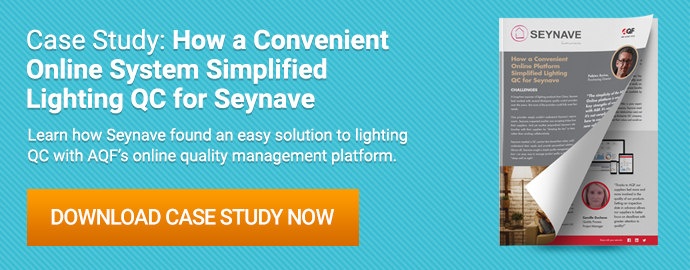Product recalls can do a number on your brand’s reputation. Imagine one of your customers purchases your lighting product only for it to short circuit and cause an electrical fire. Now imagine the lawsuit and bad publicity that would follow soon after.
Only major brands can survive that kind of controversy and even they prefer not to risk it. Product recalls happen all the time, though, and for a variety of reasons. Sometimes they are major safety hazards and other times it is just a precaution.
In this blog post, we’ll take a look at some past lighting product recalls and discuss how to avoid similar situations through rigorous product safety testing.
Hunter Fan Recalls Lighting Products Due to Shock Hazard
In 2022, Hunter Fan issued a voluntary recall on 41 different models of lighting products after it was discovered that internal wires posed a potential shock hazard to consumers. Although no injuries were reported, the recall was prompted by reports of the lights causing circuit breakers to trip. Altogether, approximately 2,600 units were recalled.
How to Prevent Similar Incidents:
Not all product issues are noticeably visible, which is why it is important to always check internal components, especially for electrical products like lighting. Suppliers may use unapproved or inferior products to lower product costs so always ask for a Construction Data Form (CDF) and make sure your inspector reports any nonconformities. Specifically in this example they should check whether the internal wire is burnt or scrapped, or whether the conductor is exposed.
Tech Lighting Recalls Light Fixtures Due to Impact Injury Hazard
In 2022, Tech Lighting issued a product recall notice in Canada and the U.S. for their Coda Pendant lighting fixture. The recall was issued after reports surfaced of the lighting fixtures becoming detached from the power cord and falling unexpectedly. Although no injuries were reported, the company provided free repair kits and reimbursed consumers for the cost of professional installation.
How to Prevent Similar Incidents:
A tensile strength test measures a material's resistance to stress. In this example, it would involve a sample of the cord being subjected to gradually increasing tension until it breaks. The force required to break it is recorded.
Lighting Science Group Recalls LED Light Bulbs Due To Risk of Overheating
In 2013, Lighting Science Group was forced to recall approximately 554,000 light bulbs that were being sold under the brand names Definity, EcoSmart, Sylvania and Westinghouse. The recall was issued after 68 reports of product failures were received. The light bulbs reportedly overheated and, in some cases, produce visible smoke and other fire conditions. Although no injuries occurred, there were incidents of damage to light sockets, melted fixtures, burned rugs/carpet/floors and other damages.
How to Prevent Similar Incidents:
Lighting products are often used for long periods of time and must be able to withstand continued use. An endurance test can be used to evaluate your product’s ability to maintain safe and functional performance over time. For example, the inspector may leave the light running for several hours at the highest possible setting while observing its performance and checking for signs of malfunction.
Tomshine Recalls 25-Bulb String Lights Due to Shock Hazard
In 2023, The company Tomshine decided to recall their lighting product, a 25-bulb string light for outdoor use sold via Amazon, after it was discovered that the product posed a significant risk of electric shock. The product listing was also removed from Amazon and can no longer be sold as it does not meet the requirements of the Electrical Equipment (Safety) Regulations 2016.
How to Prevent Similar Incidents:
The shock hazard in this example was a result of insufficient creepage and clearance distances, which can cause accessible metal parts to become live over time. A hi-pot test is one of the most important safety tests for electrical products and is used to measure the electrical current that flows through the product. You should always perform a hi-pot test on the entire sample size to determine if your product is safe to use at normal voltage levels.
How Safe Is Your Lighting Product?
Don’t wait for your customers to uncover your product’s biggest weakness. Any time you are dealing with electricity, it is critical that you make product inspection and on-site testing a high priority, not an afterthought.
AQF offers product-specific lighting quality control services worldwide. Our expertise extends to outdoor lights, indoor lights, ceiling lights, chandeliers, table lamps, floor lamps, desk lamps, lighting controls, as well as LED bulbs and conventional bulbs. Sign up for AQF Online to get started with on-site safety testing today.







